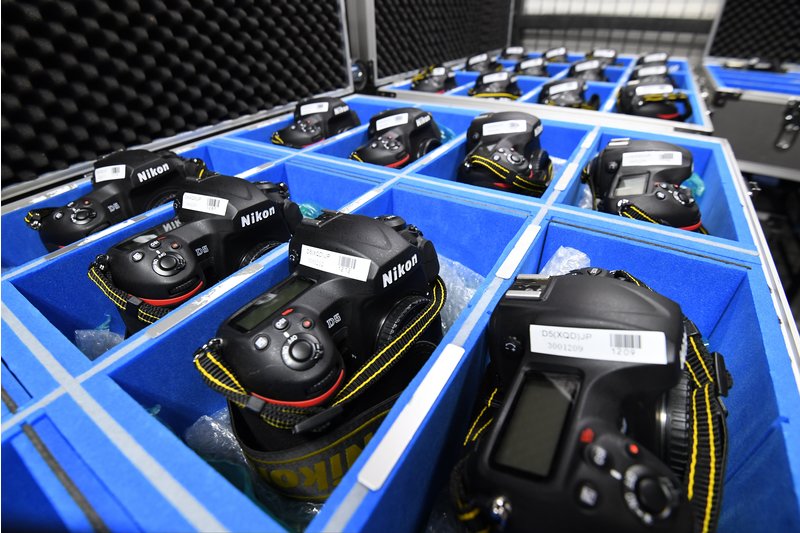无反相机大行其道,佳能尼康地位岌岌可危
无反相机的成像质量仍然无法与单反相机媲美,但价格却相对低廉很多。

|
如果你是一个市场领导者,你的领域出现了某种具有潜在颠覆性的创新,你得多快做出反应,才能避免被掀下市场领导者的宝座?作为一个业余摄影师的笔者,今天就来探讨一下相机巨头尼康和佳能的命运。 我的第一部佳能相机是一台型号为AT-1的乞丐版胶片机,它是很多年前我的成年礼物。不过佳能主打的客户群一向是专业摄影师群体,他们不惜一掷千金购买那种炮筒镜头的大块头专业相机。尼康和佳能并称相机界双雄,地位相当于可乐界的百事和可口可乐。只不过几十年来,这两家公司都把主要精力放在了单反市场上。 根据哈佛教授克莱顿·克里斯蒂森教授的“颠覆理论”,随着市场领导者持续提升产品性能,它的产品往往会超过一些消费者的实际需求,造成性能过剩。而新进者往往能以较低的价格和中端的配置满足这些被忽视的用户的需求。根据克里斯蒂森2015年发表的一篇关于“颠覆理论”的论文,坐在市场顶端的守成者往往会满足于自己的品质优势,而“不去积极地做出回应”。(当然,近年来克里斯蒂森的“颠覆理论”也遭到了一些合理批评。) 虽然相机市场已经进入了数码时代,但佳能和尼康的优势仍在,因为胶片机时代的相机镜头仍能用在新款的数码单反相机上。而与此同时,智能手机的崛起几乎已彻底摧毁了消费级的傻瓜相机市场。另外从大约10年前开始,已经有一些竞争者决定采取新的策略与佳能和尼康竞争。 单反相机又叫“单镜头反光式取景照相机”,是指使用单镜头,并且光线通过此镜头照射到反光镜上,通过反光取景的相机。这些竞争者没有搞出自己的单反,像松下、奥林巴斯等厂商推出的相机都是只依赖数字传感器技术。这些“无反”相机的尺寸和重量都小于传统的单反相机,它们的镜头也是可以互换的,不过其成像质量仍然无法与单反相机媲美,但价格却相对低廉很多。没过多久,索尼、三星和富士也相继推出了更好的无反相机。 面对无反相机的来势汹汹,佳能和尼康一开始基本上是无视的,他们依然在努力改进巨大的单反相机,并添加了更多的感光元件以捕捉更多的像素。不过随着无反相机销量的增长,尼康终于按捺不住推出了自家的无反相机,佳能也迅速跟进,然而二者的产品反响只是平平。很显然,作为市场领导者的佳能和尼康都不希望他们的专业用户群放弃购买高价格的单反,转而购买低利润的无反。 正如克里斯蒂森所预测的那样,只要销量上去了,无反相机技术水平的增长是自然而然的事。近年来,索尼、富士和奥林巴斯都吸引了越来越多的“真正”的摄影师前来投奔。去年,日本的单反相机销量下跌了10%,而无反相机的销量上升了29%。现在佳能和尼康终于意识到了无反相机的威胁,开始认真考虑研发专业级的无反相机了。几周前,佳能公司的一名高管向《日经亚洲评论报》表示,该公司必须“积极推出面向增长市场的产品,哪怕会带来一些产品撞车的问题。”佳能的新产品预计今年下半年就将推出,问题是,他们是否已经观望得太久了。(财富中文网) 译者:朴成奎 |
How long should a market leader let a potentially disruptive innovation go before reacting? Amateur photog Aaron in for Adam today, contemplating the fate of camera titans Nikon and Canon. I got my first Canon camera, a no-frills film model known as the AT-1, as a gift for my bar mitzvah many years ago, but the company’s major market has always been professional photographers who spend thousands of dollars on the hefty bodies and gigantic lenses that bring in the big bucks. Nikon was the Pepsi to Canon’s Coke, or maybe the other way around, but the two companies had a lock on the high-end market of single-lens reflex, or SLR, cameras for decades. In Harvard professor Clayton Christensen’s well-trodden disruption theory, as a market leader continues to improve its product, it goes beyond meeting the needs of what some customers actually want. New entrants with a new technology arrive, usually at a lower price and with fewer capabilities, aiming to meet the need of those overlooked customers. The incumbents, satisfied that their advantage in quality is what matters most “tend not to respond vigorously,” Christensen wrote in a 2015 article explaining and defending his theory (which has come in for some legitimate criticism over the years). Even when the camera market went digital, the advantages of owning a Canon or Nikon remained, as new digital SLR models were compatible with lenses from the prior analog film models. At the same time, the rise of smartphones has nearly destroyed the market for pocket-size consumers cameras. So starting almost exactly 10 years ago, some competitors decided to try a new tactic to compete. Instead of selling their own SLRs, which use a mirror and prism mechanism to allow a scene to be viewed by the photographer and recorded on film, Panasonic, Olympus, and others started selling smaller cameras that relied just on digital sensors. Without the mirror and prism contraption, these “mirrorless” cameras could be much smaller and lighter than traditional SLRs. They still came with interchangeable lenses, but the picture quality couldn’t match the SLRs. Prices were much lower, however. Soon, Sony, Samsung and Fujifilm were making even better mirrorless cameras. Canon and Nikon largely ignored the trend. They were still making hay with their gigantic SLR models, adding ever more sensitive sensors to capture even more pixels. But as sales of mirrorless cameras increased, first Nikon and eventually Canon introduced their own models, to mainly mediocre reviews. The market leaders appeared not to want to tempt any of their pro audience away from buying higher-priced SLRs. Just as Christensen’s predicted, the cheaper technology improved and lately Sony, Fuji, and Olympus have been tempting a growing number of “real” photographers to defect. In Japan last year, sales of SLR models dropped 10% and mirrorless sales increased 29%. Now Canon and Nikon are waking up to the threat and planning serious, professional-grade mirrorless models. A top Canon exec told the Nikkei Asian Review a few weeks ago that the company must “actively roll out products for a growth market even if there is some cannibalization.” The new models should arrive in the second half of this year, but the question now is whether they waited too long. |













